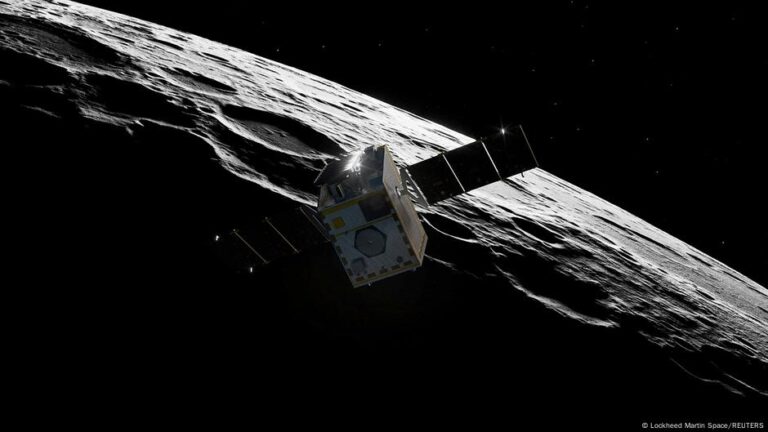What you need to know:
- China and Russia plan to build a nuclear reactor on the moon by 2035 to power a permanent lunar base.
- The International Lunar Research Station (ILRS) will rely on the power plant for its scientific research.
- The IRLS involves over a dozen international partners and is seen as a rival program to NASA’s Artemis Program.
China and Russia plan to build an automated nuclear power station on the moon by 2035.
A memorandum of cooperation for the project was signed between Russia’s space agency Roscosmos and the China National Space Administration (CNSA) this week.
The power station will be part of the proposed ILRS lunar base and will provide energy to enable long-term lunar exploration and scientific research.
ILRS is seen as a rival to the US-led Artemis program, which plans to build an orbital lunar space station called “Gateway” from 2027.
Artemis involves NASA and the space agencies of 55 other countries, including European Space Agency member states.
What is the International Lunar Research Station?
The ILRS project aims to establish a scientific research base on the moon located within 100 kilometers (62 miles) of the lunar south pole.
It will feature long-term autonomous operations and short-term human missions.
“The station will conduct fundamental space research and test technology for long-term uncrewed operations of the ILRS, with the prospect of a human being’s presence on the Moon,” Roscosmos said in a statement.
First announced in 2017, ILRS includes involvement from Pakistan, Venezuela, Belarus, Azerbaijan, South Africa, Egypt, Nicaragua, Thailand, Serbia, Senegal and Kazakhstan.
China will also invite 50 countries, 500 international scientific research institutions and 5,000 overseas researchers to join the ILRS as part of its “555 Project,” said Wu Weiren, chief designer of China’s lunar exploration program in a statement last year.
While the ILRS aims to be a center of scientific research, the Moon’s natural resources are also an enticing prospect for spacefaring nations.
The moon holds valuable metal oxides, regolith (lunar soil), rare Earth metals, and possibly significant amounts of helium-3, a potential fuel for nuclear fusion power.
The question of who can actually own bits of the moon is hotly debated among legal experts.
Will China lead future space exploration?
ILRS is part of China’s mission to be come a leader in space exploration and scientific research.
The first pieces are to be laid by China’s Chang’e-8 mission in 2028. This will double as China’s first attempt at landing an astronaut on the lunar surface.
China has been landing unmanned rovers on the moon since 2013 and its scientists have led missions that have mapped the lunar surface, including the “dark side of the moon,” which is the lunar hemisphere that always faces away from Earth.
In June 2024, China became the first nation to successfully collect rocks from this hemisphere. The mission was hailed by China, with state news agency Xinhua describing it as “an unprecedented feat in human lunar exploration history.”
Edited by: Matthew Ward Agius


